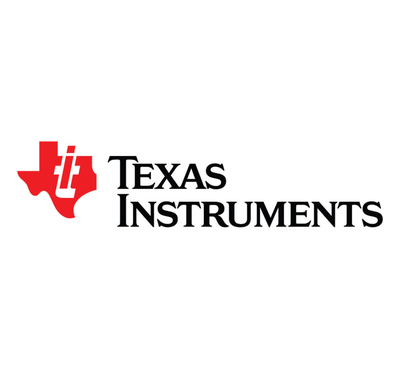TI drives isolation technology forward with new solid-state relays that provide industry-leading reliability
Texas Instruments (Nasdaq: TXN) launched a new portfolio of solid-state relays aimed at enhancing electric vehicle (EV) safety. These relays reduce solution size by up to 90% and costs by as much as 50%, compared to existing technologies. The TPSI3050-Q1 and TPSI2140-Q1 drivers integrate power and signal isolation, offering high reliability and performance improvements in high-voltage systems. Designed for 800-V battery management, these products enhance safety and efficiency in EV applications.
- New portfolio of solid-state relays improves EV safety and reliability.
- Solution size reduced by up to 90% and costs by 50%.
- TPSI3050-Q1 offers reinforced isolation up to 5 kV RMS with 10 times higher lifetime than electromechanical relays.
- None.
Insights
Analyzing...
New portfolio can help make EVs safer while reducing solution size up to
DALLAS, May 10, 2022 /PRNewswire/ -- Building on more than two decades of experience developing new isolation manufacturing technologies and integrated circuits (ICs) for high-voltage systems, Texas Instruments (TI) (Nasdaq: TXN) today introduced a new portfolio of solid-state relays, including automotive-qualified isolated drivers and switches, that deliver industry-leading reliability to help make electric vehicles (EVs) safer. The new isolated solid-state relays also provide the smallest solution size while reducing the bill-of-materials (BOM) cost of powertrain and 800-V battery-management systems. For more information, see ti.com/ssr-pr.
The TPSI3050-Q1 isolated switch driver with an integrated 10-V gate supply and the TPSI2140-Q1 1,400-V, 50-mA isolated switch both integrate power and signal isolation across a single barrier using a unique approach that improves reliability, while significantly reducing solution size and cost compared to existing electromechanical relays and solid-state photorelays. The devices are the first in a new solid-state relays portfolio that will also include ICs designed for high-voltage industrial applications. To learn more about the benefits of solid-state relays, read the technical article, "How to Achieve Higher-Reliability Isolation and a Smaller Solution Size with Solid-State Relays."
"High-voltage systems are becoming more prevalent, especially with the increased adoption of EVs. At TI, we are strongly focused on finding new ways for system designers to solve complex isolation challenges, such as ensuring reliable and safe vehicle operation as the industry transitions to 800-V batteries, while also reducing solution size and cost," said Troy Coleman, vice president and general manager of Power Switches, Interface and Lighting at Texas Instruments. "By integrating more functionality within our isolation technology, our new solid-state relays enable engineers to reduce the size, cost and complexity of high-voltage power supplies while maintaining the safety of next-generation automotive and industrial systems."
Achieve higher system reliability with integrated isolation technology
The new solid-state relays can disconnect and connect loads through a single isolation barrier in microseconds – compared to milliseconds for electromechanical relays – to enable safer operation of high-voltage automotive systems. The TPSI3050-Q1, which offers reinforced isolation up to 5 kVRMS, also provides an operating lifetime that's 10 times higher than electromechanical relays, which can degrade over time. Additionally, the TPSI2140-Q1 offers basic isolation up to 3.75 kVRMS, enabling it to achieve more than four times higher time-dependent dielectric breakdown reliability than solid-state photorelays.
Reduce system size and cost with integrated power and signal isolation
The solid-state relays integrate power and signal transfer in a single chip while also eliminating at least three components from their designs, significantly reducing solution size while cutting BOM costs by as much as
Improve safety of 800-V EV battery-management systems
Designed for high-voltage measurements and insulation monitoring, the TPSI2140-Q1 works with a battery-pack monitor such as the BQ79631-Q1 to detect insulation faults in 800-V battery-management systems faster and with higher accuracy than solid-state photorelays. The TPSI2140-Q1 enables the use of <1-MΩ resistors and withstands over
Package, availability and pricing
The TPSI3050-Q1 and TPSI2140-Q1 are available in pre-production, 1,000-unit quantities only on TI.com at US
Isolation products that are different by design
The solid-state relays are the latest addition to TI's growing portfolio of products for isolating signals, power or both. Other new products include the UCC14240-Q1 isolated DC/DC bias-supply module, which leverages TI's proprietary, integrated transformer technology to enable high power density, low electromagnetic interference and high reliability to improve EV driving ranges, and the AMC23C12, the industry's first reinforced isolated comparator. The AMC23C12 combines the functions of standard comparators with a galvanic isolation barrier while reducing solution size by
About Texas Instruments
Texas Instruments Incorporated (Nasdaq: TXN) is a global semiconductor company that designs, manufactures, tests and sells analog and embedded processing chips for markets such as industrial, automotive, personal electronics, communications equipment and enterprise systems. Our passion to create a better world by making electronics more affordable through semiconductors is alive today, as each generation of innovation builds upon the last to make our technology smaller, more efficient, more reliable and more affordable – making it possible for semiconductors to go into electronics everywhere. We think of this as Engineering Progress. It's what we do and have been doing for decades. Learn more at TI.com.
![]() View original content to download multimedia:https://www.prnewswire.com/news-releases/ti-drives-isolation-technology-forward-with-new-solid-state-relays-that-provide-industry-leading-reliability-301543110.html
View original content to download multimedia:https://www.prnewswire.com/news-releases/ti-drives-isolation-technology-forward-with-new-solid-state-relays-that-provide-industry-leading-reliability-301543110.html
SOURCE Texas Instruments









